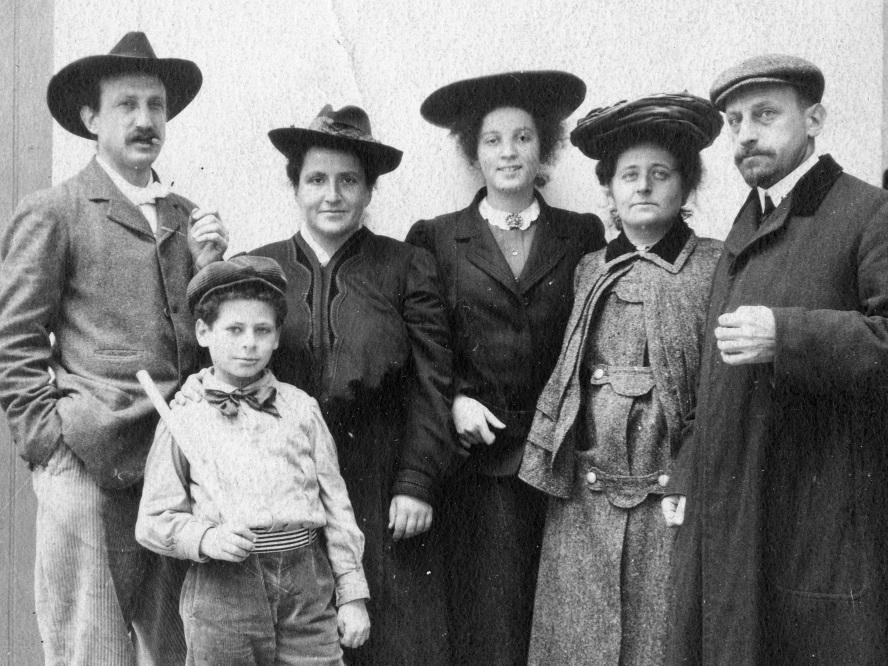
Written in the form of an autobiography of Stein's life partner, the book is in actual fact her own memoir. COURTESY
Gertrude Stein, who died 75 years ago this month, was at the cultural heart of Paris for more than four decades. She provided vital patronage for Matisse and Picasso at a time when few others had any appreciation for their work, and the Saturday evening gatherings where she played hostess to those in the know have become legendary. After World War One, she became a major draw for the legion of British and American writers who flocked to the French capital seeking a freedom of expression frequently denied them in their more puritanical homelands. In Stein's own mind she was a genius who would revolutionise English literature, however her largely impenetrable prose means she is one of the least-read famous authors of all time. With one exception – The Autobiography of Alice B Toklas.
Written in the form of an autobiography of Stein's life partner, the book is in actual fact her own memoir. But given the cast of characters, which range from Matisse, Picasso and Braque to Ernest Hemingway, F Scott Fitzgerald and Ezra Pound, it has proved a lasting tribute to a uniquely vibrant and creative era. “I think its real charm is the fact that it captured a period that would be totally fractured by World War Two. That very wonderful period of freedom and questioning and change,” says Diana Souhami, author of Gertrude and Alice, and No Modernism Without Lesbians. “They were her friends, all those people, and they all float in and out, but there's also Auntie the car, Hélène the cook and Basket the dog. It's extremely evocative, extremely readable and it still feels fresh,” she says.
Gertrude arrived in Paris in 1903 at the invitation of her brother Leo, who had already settled there. The pair made their home in an apartment on the rue de Fleurus, a little street on the Left Bank close to the Luxembourg Gardens. Thanks to an inheritance they had a small private income, which went much further in France than it would have done in their native US. Leo was the first of the Steins to buy a modern painting but Gertrude soon began to share his interest.
The book evocatively conjures up an era where what became regarded as modern masterpieces could be snapped up for little more than the price of confectionary, from dealers who seemed to sell more for passion than profit. Cézannes were picked up from the Vollard's on the rue Lafitte, an “incredible place” where canvases were “thrown pell-mell on top of one another,” wrote 'Alice'. Picassos could be bought from the dealer Sagot, a former circus clown. Once in a while the Steins would frequent Fouquet, the confectioners where one could “instead of a picture buy oneself strawberry jam in a glass bowl”.
Matisse's ground-breaking La Femme au Chapeau was bought from the first Salon d'Automne, where artists who were too experimental for the official Salon could exhibit, often incurring public and critical ridicule in the process. “People were roaring with laughter at the picture and scratching at it. Gertrude Stein could not understand why, the picture seemed to her perfectly natural,” wrote 'Alice'.
The Matisse portrait would join Cézanne's portrait of Madame Cézanne, which Gertrude claimed influenced the way she wrote her first major work, Three Lives, building up her characters with her repetitive sentences in the way that Cézanne built up the portrait via plains of colour. As she also claimed in the Autobiography to have learned the qualities of sentences and paragraphs from the rhythm of her dog Basket's drinking, her lack of earlier readership is perhaps understandable.
Despite her idiosyncrasies she could clearly recognise talent in others. “I think she had a huge nose for things,” says Souhami. “In a short space of time she had a collection beyond price. And then people became interested and wanted to look at them.”
“Matisse brought people, everybody brought somebody, and they came at any time and it began to be a nuisance, and it was in this way that Saturday evenings began,” wrote 'Alice'.
‘She didn't write to please’
The real-life Alice arrived on the scene in 1907 when the Steins' reputation was already cemented. When she first met Gertrude she heard bells ringing in her head and was convinced this meant she was in the presence of genius. Their relationship was sealed after a walk in the Luxembourg Gardens the following day, and they would remain inseparable until Gertrude's death, 39 years later.
Picasso was another one who caused bells to ring for Alice. She met him at her first Saturday evening and told him that she liked his portrait of Gertrude. “'Yes', he said, everybody says that she does not look like it but that does not make any difference, 'she will', he said.”
Although Alice presented herself almost as a maidservant to Gertrude, carrying her bags, typing up her manuscripts and entertaining the “wives” while Gertrude talked to the “geniuses” during salon evenings, Souhami believes she played a vital role in Gertrude's success. “I think she was an impresario. She put the show on the road. In my view Gertrude probably wouldn't have got there without Alice,” says Souhami.
She was undoubtedly a formidable presence, and one that put Leo's nose firmly out of joint. Eventually he left with the Renoirs and Matisses, while Gertrude kept the Cézannes and the Picassos. They never spoke again.
After the war, Gertrude Stein's focus shifted to the writers who flocked to her door. Few claimed to have read her work but her prestige was enormous. “I think she could make reputations. She certainly was interested in what they were working on, and became rather like a seer or a prophet,” says Souhami. “She must have had common sense about people's abilities. She did for Hemingway, for Scott Fitzgerald and for Paul Bowles.”






0 Comments